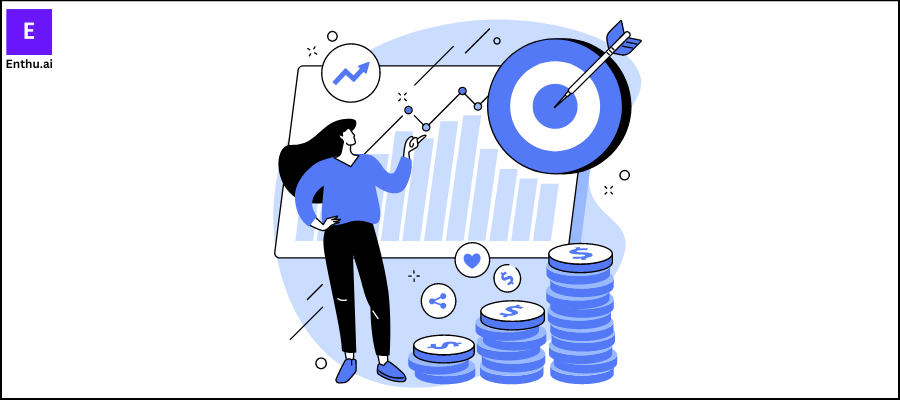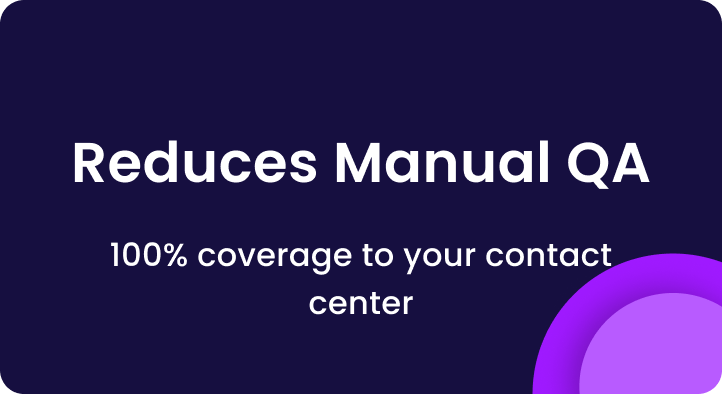Thanks to technological advances, you can track and measure pretty much anything about your customer service or sales representatives’ performance.
But just gathering data isn’t sufficient, especially regarding sales coaching.
To better use your data, you need to have a clear understanding of what sales coaching metrics are the most important and how to measure them effectively.
By strategically choosing and measuring the right metrics, you can streamline your sales coaching process, identify your team’s strengths and weaknesses, and deliver targeted support and guidance to maximize their performance.
However, with so many metrics to choose from, it can be overwhelming to determine which ones will truly drive results.
With our extensive research we’ve compiled a list of the top 17 sales coaching metrics that you should measure in 2025.
These metrics will provide you with actionable insights and help you create a more focused, effective sales coaching strategy.
Let’s dive in!
A. What are sales coaching metrics?
Sales coaching metrics are data points that help you see how well your sales team is performing.
These metrics give you a clear picture of the areas where your agents excel and where they need improvement.
By regularly tracking and measuring these valuable insights using tools like call monitoring software and speech analytics, you can discover who needs help and where you can make improvements to boost your team’s performance.
You can tailor your coaching to address specific issues, support your team members where they need it most, and help everyone perform better.
For example, imagine you’re a call center manager.
One key metric you track is “lead response time,” which measures how quickly your team responds to new leads.
If you notice that your team’s response time is slow, you can coach them on ways to respond faster, like using call scripts or prioritizing certain tasks.
This can lead to more leads being converted into customers, which means better sales results for your team.
B. 17 sales coaching metrics to measure in 2025 and beyond
1. Win Rate
What is it?
Win rate is a crucial sales coaching metric that measures the percentage of final-stage prospects who convert into customers out of the total number of deals in your sales pipeline.
It provides insight into the effectiveness of your sales efforts in closing deals and generating revenue.

How to Calculate It
To calculate the win rate, divide the number of closed-won deals by the sum of your closed and non-closed-won deals. The formula for the win rate is:
Number of Closed-Won Deals/Total Number of Deals*100
Why measure it?
Measuring the win rate is essential because it offers valuable insights into the performance of your sales team and the effectiveness of your sales strategies.
It helps sales leaders identify areas for improvement, optimize sales processes, and make informed decisions to enhance overall sales performance.
2. Conversion Rate
What is it?
Conversion rate is a key sales metric that measures the percentage of leads that successfully transition into customers.
It provides insight into the effectiveness of your sales process in converting prospects into paying customers.

How to Calculate It
To calculate the conversion rate, divide the number of leads who become customers by the total number of leads generated within a specific period.
For example, if you generate 500 leads in a month and 50 of them purchase your product, your conversion rate would be calculated as follows:
Why measure it?
Measuring conversion rate is essential for assessing the efficiency of your sales efforts and determining the effectiveness of your lead generation strategies.
It helps you understand how well your sales team is performing in converting leads into customers and provides valuable insights into the overall health of your sales pipeline.
3. Average Deal Size
What is it?
Average deal size, also known as average sale price (ASP), refers to the average revenue generated from each closed deal.
It provides insight into the typical value of a sale and helps businesses understand their revenue potential on a per-sale basis.

How to Calculate It
To calculate the average deal size, divide the total revenue generated from closed deals by the number of deals closed within a specific period.
For example, if you close ten deals with a total revenue of $5,000, the average deal size would be calculated as follows:
Why measure it?
Measuring the average deal size is crucial for understanding each sale’s potential and forecasting future revenue accurately.
It lets your sales managers make informed decisions about resource allocation, sales strategies, and revenue projections.
4. Sales Cycle Length
What is it?
Sales cycle length refers to the average duration for a sales opportunity to progress from the initial contact with a prospect to closing the deal.
It measures the sales efficiency and effectiveness of your sales process by tracking the time it takes to convert leads into customers.
How to Calculate It
To calculate sales cycle length, divide the total duration of all sales cycles (in days) by the number of closed deals within a specific period.
Why measure it?
Measuring sales cycle length provides valuable insights into the efficiency of your sales process and helps identify areas for improvement.
By analyzing the duration of sales cycles, sales managers can identify bottlenecks or inefficiencies in the sales process and determine which sales strategies or tactics result in shorter sales cycles.
Also, it helps you optimize resource allocation and sales efforts and improve customer satisfaction and retention.
5. Lead Response Time
What is it?
Lead response time refers to the time it takes sales representatives to contact leads generated through various channels, typically measured in minutes.
It assesses the speed and efficiency of your team’s response to incoming leads, which is crucial for maximizing conversion opportunities.
How to Calculate It
To calculate lead response time, track the time elapsed between generating a lead and the moment a sales representative makes initial contact with that lead.
The response time is measured in minutes from lead generation to contact initiation.
Why measure it?
Measuring lead response time is crucial as it indicates how promptly reps engage with leads.
Research suggests that a response within five minutes significantly boosts conversion chances.
Monitoring this metric ensures timely lead follow-up, prevents leads from slipping away, and enhances overall sales effectiveness.
6. Quota Attainment
What is it?
Quota attainment measures how a salesperson or team achieves their assigned sales targets within a specified period.
It reflects their success in meeting revenue goals.
How to calculate it?
To calculate quota attainment, divide the actual revenue a salesperson or team generates by their assigned quota for the same period, then multiply the result by 100%.
Why measure it?
Quota attainment provides insights into individual and team performance, indicating who needs additional coaching or support.
It also helps assess the effectiveness of the organization’s sales processes, messaging, leadership, and goal-setting.
Monitoring quota attainment ensures realistic sales goals and guides strategic decision-making to enhance overall sales performance.
7. Pipeline Coverage
What is it?
The pipeline coverage ratio is a financial metric used to assess a business’s health and potential success by comparing the total value of its current sales pipeline to its sales quotas or goals for a specific period.
It indicates whether the business has enough potential sales opportunities to meet its future targets.

How to calculate it?
The pipeline coverage ratio is calculated by dividing the total value of the sales pipeline by the total sales target for a given period. The formula is as follows:
Why measure it?
Measuring the pipeline coverage ratio provides valuable insights into the company’s revenue potential and helps in setting realistic targets.
It ensures a healthy buffer of potential sales to meet or exceed the sales goals.
Additionally, it helps in sales forecasting and planning, guiding strategic decisions to optimize sales and marketing efforts for sustainable growth.
8. Sales Velocity
What is it?
Sales velocity measures how quickly a sales team converts leads into customers and generates revenue.
It gives insight into the speed at which deals progress through the sales pipeline, reflecting the efficiency and productivity of the sales process.
How to calculate it?
To calculate sales velocity
Formula of sales velocity
(Number of Opportunities×Average Deal Value×Win Rate)/Length of Sales Cycle
Why measure it?
Measuring sales velocity is crucial for understanding the effectiveness of your sales efforts and forecasting revenue accurately.
It helps analyze the sales process, identify strengths and weaknesses, and optimize strategies to increase revenue generation.
By tracking sales velocity, sales teams can set realistic goals, allocate resources efficiently, and drive business growth effectively.
9. Activity Metrics
What is it?
Activity metrics in sales coaching refer to specific data points that track the performance and behavior of your sales team.
These metrics include the number of calls made, emails sent, demos conducted, appointments set, new leads generated, and prospects in the pipeline.
They provide insights into where your sales reps are focusing their efforts and how they are engaging with potential customers.
How to calculate it?
To calculate activity metrics, you simply count the number of each activity completed within a given period.
For example, to calculate the number of calls made, count the total number of outgoing calls made by each sales rep during the specified time frame.
Why measure it?
The Average Activities metric is calculated by dividing the total number of activities created during the specified period by the total number of opportunities involved in those activities.
10. Opportunity-to-Win Ratio
What is it?
The Opportunity-to-Win Ratio is a key metric used in sales coaching to assess the effectiveness of closing deals.
It measures the percentage of opportunities that result in successful closed-won deals, providing insights into the efficiency and performance of the sales process.
How to calculate it?
To calculate the Opportunity-to-Win Ratio, divide the number of successfully closed opportunities by the total number of closed opportunities within a specific period.
Opportunity-to-win ratio formula (Number of Closed-Won Opportunities / Total Number of Closed Opportunities) * 100
Why measure it?
Measuring the Opportunity-to-Win Ratio is essential for evaluating the success of your sales efforts.
It helps identify strengths and weaknesses in the sales process, highlighting areas for improvement.
By tracking this metric, sales leaders can optimize their strategies, improve win rates, and ultimately drive higher revenue for the company.
11. Customer Acquisition Cost (CAC)
What is it?
Customer Acquisition Cost (CAC) is a crucial metric in sales coaching.
It calculates the average amount of money your organization spends on sales and marketing to acquire a new customer.
CAC reflects the efficiency of your sales and marketing strategies.

How to calculate it?
To calculate CAC, choose a specific timeframe (e.g., month, quarter, or year).
Add up all your sales and marketing expenses during that period and divide it by the total number of new customers acquired.
Formula of CAC
(Total Sales and Marketing Expenses) / (Total Number of New Customers)
Why measure it?
Measuring CAC helps you understand the effectiveness of your sales and marketing efforts.
It guides you in allocating your budget wisely, identifying expensive customer segments, and focusing your resources on the most valuable markets.
You can optimize your strategies to improve customer acquisition efficiency and overall business performance by tracking CAC, especially when considering customer segmentation.
12. Customer Lifetime Value (CLV)
What is it?
Customer Lifetime Value (CLV) is a vital metric in sales coaching that predicts the total revenue a business can expect from a single customer account over their entire relationship with the company.
It evaluates a customer’s revenue value and compares it to the anticipated duration of their relationship with the company.
How to calculate it?
To calculate CLV, multiply the average revenue generated by a customer per year by the average lifespan of the customer.
CLV (Customer lifetime value) formula
Average Customer Revenue per Year * Average Customer Lifespan
Why measure it?
Measuring CLV helps you understand the long-term value of your customer relationships and guides strategic decision-making.
It assists in optimizing resource allocation by identifying profitable customer segments and areas for improvement in customer engagement.
Tracking CLV can enhance customer retention, maximize revenue, and improve overall business performance.
13. Churn Rate
What is it?
Churn Rate is a crucial metric in sales coaching that measures the percentage of customers who cancel their subscriptions or fail to make repeat purchases within a specific period.
It indicates the rate at which customers disengage from your product or service.
How to calculate it?
To calculate the Churn Rate, divide the number of customers lost during a given time period by the total number of customers at the beginning of that period.
Formula of churn rate
(Number of customers lost in a given time period) / (Total number of customers at the beginning of the time period)
Why measure it?
Measuring Churn Rate helps you assess customer satisfaction, product-market fit, and the effectiveness of your sales and retention strategies.
High churn rates may signal underlying issues such as pricing objections or poor customer experience, prompting proactive measures to address these challenges and improve customer retention.
14. Sales Forecast Accuracy
What is it?
Sales Forecast Accuracy is a vital metric in sales coaching that evaluates how precise your sales predictions are compared to the actual sales outcomes.
It gauges the effectiveness of your forecasting process and helps you make informed decisions regarding resource allocation, goal setting, and business planning.

How to calculate it?
Sales Forecast Accuracy can be calculated using various formulas, including Mean Absolute Percentage Error (MAPE), Mean Absolute Error (MAE), and Root Mean Squared Error (RMSE).
These formulas measure the disparity between forecasted sales and actual sales, providing insights into the accuracy of your sales predictions.
Why measure it?
Measuring Sales Forecast Accuracy is crucial for enhancing decision-making processes, resource management, and goal attainment.
Accurate sales forecasts enable businesses to allocate resources efficiently, set realistic targets, and adapt to changing market conditions effectively.
Improving forecast accuracy leads to better sales performance and overall business success.
15. Training Effectiveness
What is it?
Training Effectiveness is a key metric in sales coaching that assesses how well sales training programs improve the skills and performance of sales teams.
It evaluates the impact of training initiatives on sales outcomes, such as revenue generation, customer satisfaction, and deal closure rates.
How to calculate it?
To calculate Training Effectiveness, you can measure the difference in sales performance metrics before and after the training intervention.
Divide this difference by the number of participants in the training program to determine the average improvement per participant.
Why measure it?
Measuring Training Effectiveness helps evaluate the return on investment (ROI) of training initiatives and identify areas for improvement in sales coaching strategies.
It ensures that training programs align with business objectives, enhancing sales productivity and overall organizational success.
16. Time to Productivity
What is it?
Time to Productivity refers to the duration for a new sales team member to become fully proficient and contribute effectively to the sales process.
It assesses new hires’ onboarding and ramp-up period, from their initial training to achieving full sales competency.
How to calculate it?
To calculate Time to Productivity, subtract the start date of a new sales team member from the date they achieve full proficiency.
This duration includes training periods, shadowing experienced colleagues, and achieving set performance metrics.
Why measure it?
Measuring Time to Productivity helps optimize the onboarding process for new sales hires.
It reduces the time and resources spent on training while maximizing the speed at which they become valuable contributors to the sales team.
It ensures a smooth transition for new employees, leading to faster revenue generation and improved team performance.
17. Customer Satisfaction (CSAT)
What is it?
Customer Satisfaction (CSAT) is a metric used to gauge customer satisfaction with a company’s products or services.
It measures the contentment customers experience after interacting with your offerings, typically through feedback collected via surveys or other means.

How to calculate it?
To calculate CSAT, tally the number of satisfied responses (usually ratings of 4 or 5 on a scale) and divide it by the total number of responses, then multiply by 100 to get the percentage of satisfied customers.
Customer satisfaction (CSAT) formula
(Number of satisfied customers /Total number of survey responses)×100
Why measure it?
Measuring CSAT provides valuable insights into customer sentiment and helps identify areas for improvement in your products or services.
It allows you to gauge the effectiveness of your sales efforts and customer interactions, leading to enhanced customer retention and loyalty.
Tracking CSAT over time helps maintain high levels of customer satisfaction, ultimately driving business growth.
Conclusion
After gathering data on your sales KPIs, examine them closely to see what they reveal about your performance.
Use this insight to pinpoint areas where you can improve and devise concrete steps to enhance your results.
Always remember that while it’s crucial to monitor KPIs, each one should directly contribute to achieving your broader objectives.




 On this page
On this page

